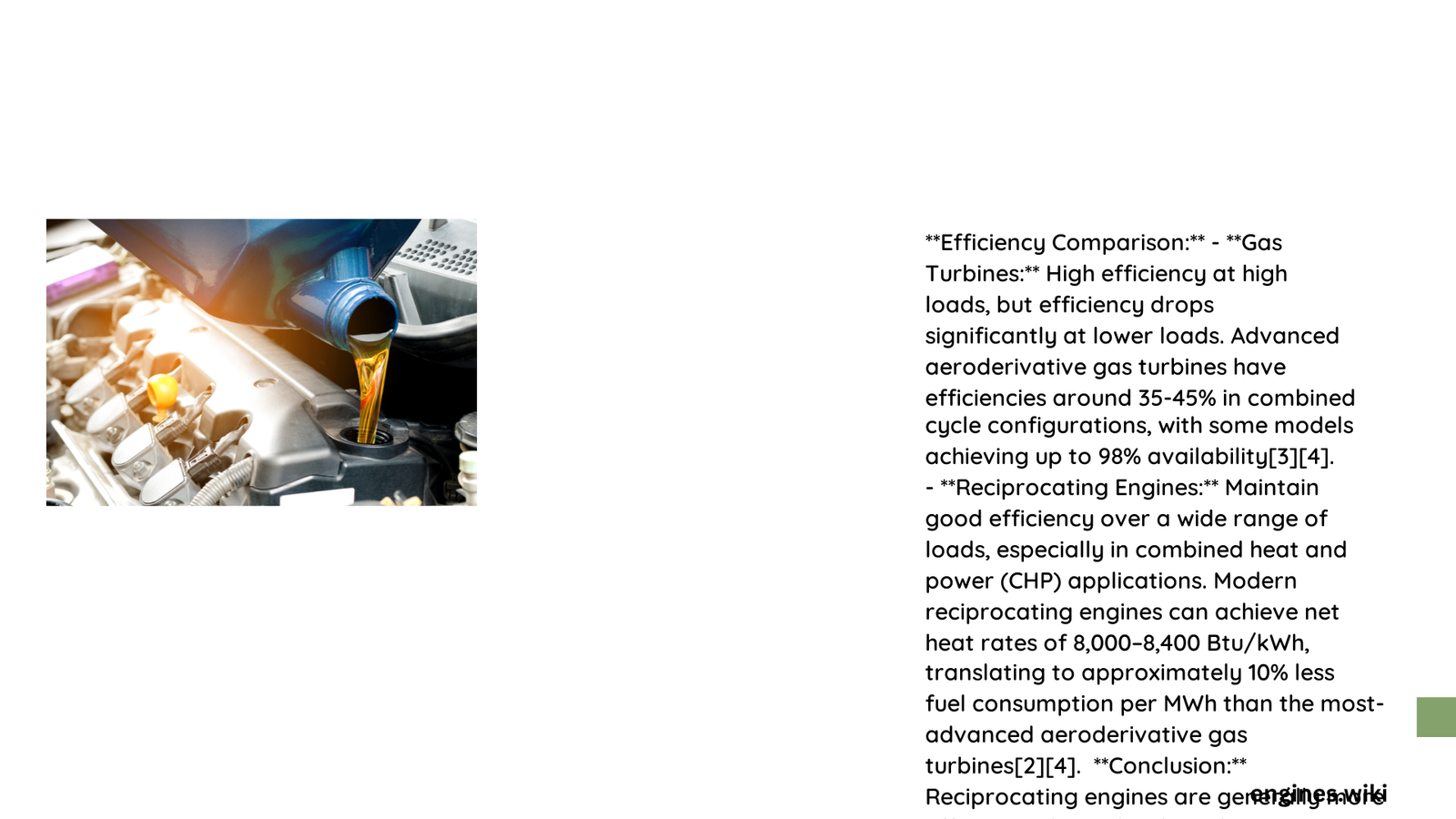In the complex world of power generation, engineers and energy professionals continuously debate the efficiency of gas turbines versus reciprocating engines. While both technologies offer unique advantages, reciprocating engines demonstrate superior overall efficiency, particularly in distributed power generation scenarios, with thermal efficiencies reaching up to 50-95% in combined heat and power applications, compared to gas turbines’ 30-60% efficiency range.
What Makes Thermal Efficiency Different?
How Do Gas Turbines Perform?
Gas turbines operate at extremely high temperatures, typically ranging from 1200°C to 1400°C. Their thermal efficiency characteristics include:
- Simple cycle efficiency: 30-40%
- Combined cycle efficiency: 55-60%
- High-temperature inlet capabilities: Up to 1600°C with advanced cooling systems
How Do Reciprocating Engines Compare?
Reciprocating engines showcase remarkable efficiency metrics:
- Single-cycle efficiency: Over 50%
- Cogeneration efficiency: Up to 95%
- Flexible fuel compatibility
- Better performance at varying load conditions
What Determines Fuel Consumption?

| Engine Type | Fuel Consumption | Efficiency Factors |
|---|---|---|
| Gas Turbines | Higher per MWh | Temperature sensitive |
| Reciprocating Engines | Lower per MWh | Load-tolerant |
Why Are Operational Costs Critical?
Initial Investment
- Gas Turbines: Higher capital costs
- Reciprocating Engines: Lower initial investment
- Breakeven Point: Depends on specific project requirements
Maintenance Considerations
- Gas Turbines
- Complex maintenance procedures
- Higher downtime risks
-
Expensive component replacements
-
Reciprocating Engines
- Simpler maintenance
- Lower forced outage rates (<1%)
- Extended operational lifespan
What Environmental Factors Impact Performance?
Altitude and Temperature Resilience
- Gas Turbines: Efficiency drops with temperature increases
- Reciprocating Engines: More stable across environmental variations
Technological Adaptability
- Advanced blade coatings
- Improved cooling systems
- Lean-burn technologies
Key Performance Metrics
Efficiency Comparison
- Gas Turbines: 30-60% efficiency
- Reciprocating Engines: 50-95% efficiency
Fuel Flexibility
- Gas Turbines: Limited fuel options
- Reciprocating Engines: Multiple fuel compatibility
Conclusion Insights
Reciprocating engines generally demonstrate superior efficiency, especially in distributed power generation and combined heat and power applications. However, the optimal choice depends on specific project requirements, load conditions, and environmental factors.
Recommendations
- Evaluate project-specific power needs
- Consider long-term operational costs
- Assess environmental constraints
- Consult power generation experts
References
- [Lifecycle Power: Turbine vs Reciprocating Engine]
- [Power Magazine: Benefits of Reciprocating Engines]
- [Caterpillar: Engines in Power Generation]
